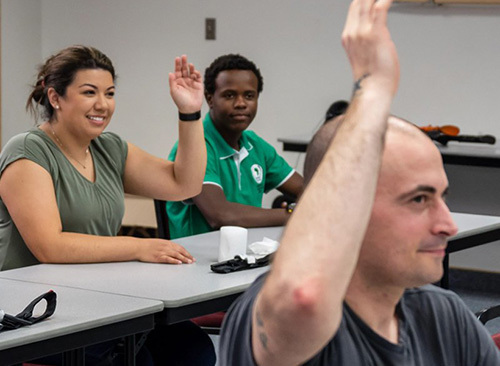Active Shooter Training
Civilian Active Shooter Response Training
Active shooter situations have become a growing concern in various settings, including public spaces, educational institutions, and even places of worship. For civilians, these threats emphasize the necessity of understanding and preparing for potential active shooter scenarios. While it may seem overwhelming, learning the warning signs, practicing situational awareness, and knowing the right responses can save lives. Civilian active violence response training provides individuals with the tools and techniques to navigate and mitigate the threats of such high-risk situations.
Take our 3-Minute Readiness Assessment
Key Protocols for Civilians in Active Shooter Situations
Civilians, often untrained and caught off-guard, can greatly benefit from structured and actionable knowledge about handling imminent threats. Being empowered with the right training can aid in making split-second decisions that are crucial for survival.
- Recognizing Potential Dangers: Civilians must be aware of the signs that precede potential threats. This includes unusual or aggressive behavior, unattended bags in public places, or other suspicious activities.
- Having Situational Awareness: Whether it's a day at the mall, attending a public event, or just daily commuting, always be conscious of the surroundings. Know the exits, potential hiding places, and always have a mental plan.
- Effective Communication Channels: Understand the importance of alerting authorities promptly. Save emergency numbers on speed dial and be ready to provide concise and vital information when reporting a threat.

Important Training for Civilians
Given the unpredictable nature of violent encounters, civilians equipped with essential life-saving skills can make a difference in the aftermath of an incident.
- Immediate Threat Assessment: Every second counts in a crisis. Civilians should learn to quickly gauge their environment, identifying safe routes away from danger or places to hide until the threat is neutralized.
- Self-Preservation Comes First: While the instinct to help is admirable, safety is paramount. Civilians should prioritize getting to a safe spot before helping others or assessing injuries.
- Basic First Aid Skills: Knowing how to help an injured person and perform basic bleeding control techniques on themselves or others can be lifesaving. These skills can help civilians become immediate responders while waiting for medical professionals.

Civilian Bleeding Control Techniques
In the aftermath of a violent situation, appropriate and immediate actions can reduce the severity of injuries and save lives.
- Safety First: Always ensure that the area is safe before assisting others. If the threat persists or the scene is unstable, prioritize evacuation or finding a safe spot.
- Quick Injury Evaluation: Understand the difference between superficial injuries and severe wounds. Prioritize treating those with life-threatening conditions first.
- Effective Pressure Application: Learn the techniques to apply pressure effectively to control bleeding, bandages, clothing, or tourniquets.

Begin Your Active Shooter Civilian Preparedness
While the above guidelines offer a solid foundation, comprehensive training is the real key to effective preparedness. HSI’s Active Violence Immediate Response Training (AVIRT) offers programs for civilians, addressing the unique challenges they might face in an active shooter situation.
Empower yourself and your community with the knowledge and skills to face unexpected dangers with confidence. Choose AVIRT for comprehensive civilian active shooter response and bleeding control training.
Learn More
FAQs
Active shooter situations can occur anywhere—schools, workplaces, malls, public events, or places of worship. Unlike first responders, civilians are often caught off guard. Proper training empowers individuals with situational awareness, escape strategies, and life-saving bleeding control techniques to increase survival chances.
Training teaches civilians to identify warning signs such as:
• Unusual or aggressive behavior
• Suspicious activities like loitering or carrying unusual bags
• Threatening statements about violence or weapons
The response strategy includes:
• Escape – Evacuate immediately if a safe route is available.
• Evade – If escape isn’t possible, find a secure hiding place, lock doors, and stay quiet.
• Attack – As a last resort, take action using available objects to neutralize the threat.
Situational awareness means being conscious of surroundings and identifying possible threats before they become dangerous. Training helps civilians develop habits such as:
• Identifying exits
• Observing behavior
• Having a crisis response plan
A person can bleed to death in as little as five minutes, often before first responders can arrive on the scene. Civilians learn to:
• Apply direct pressure to stop bleeding
• Use tourniquets effectively
• Pack wounds with gauze or cloth to slow blood loss
Training helps civilians avoid critical mistakes such as:
• Freezing in place instead of acting quickly
• Running with belongings, which slows movement
• Ignoring exits when entering a building
Yes. The situational awareness, emergency response, and first aid techniques apply to various emergencies, including natural disasters, workplace violence, and terrorist threats.
To enroll in a training session, visit the Contact Us page.